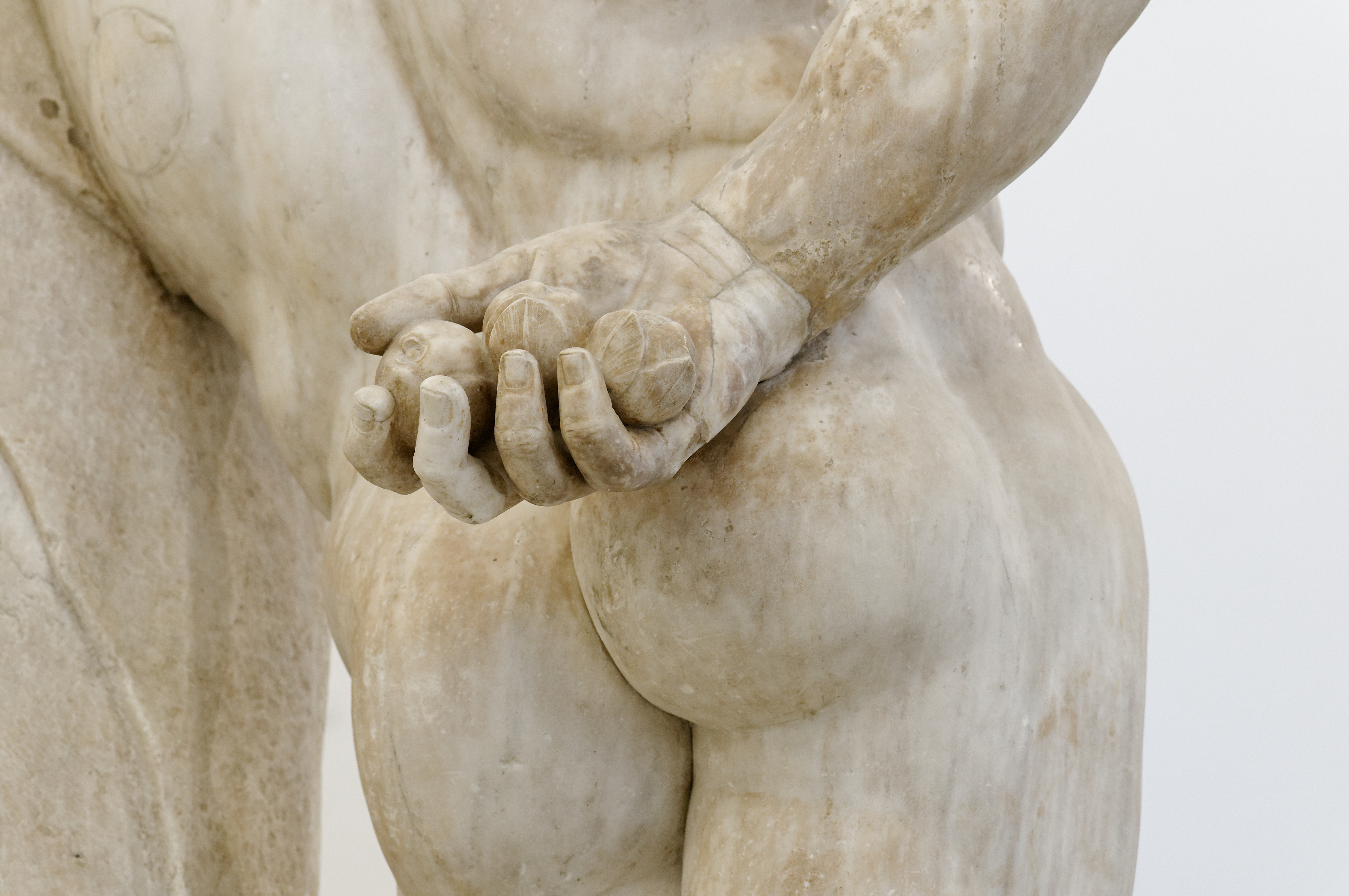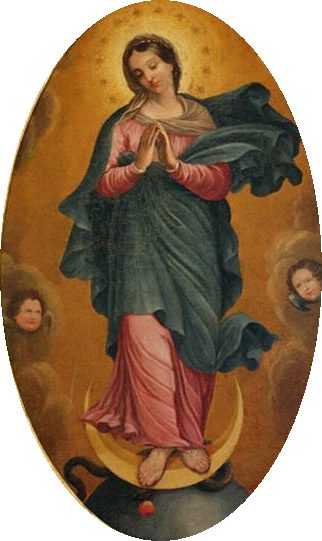|
The Death Of Dido
''The Death of Dido'' is a 1631 oil on canvas painting by Guercino, commissioned by Cardinal Bernardino Spada for Maria de' Medici which now hangs in the Galleria Spada in Rome. History Whilst Spada observed the painting of Guido Reni's '' The Abduction of Helen'' in Bologna in 1628-1629, Maria de' Medici made contact with Spada (who had previously been papal legate in France) to get Reni to come to France and paint for her there, particularly hoping he would complete a cycle of paintings on her husband Henry IV of France which Rubens had left unfinished due to the worsening French political crises regarding the queen mother. However, though he did produce a 1629 ''Annunciation'' for her, Reni declined the invitation to France, leading Spada to suggest Guercino to the queen as a replacement. She replied that she did not know the painter (who was then less well-known than Reni) and wanted a display of his talents before she accepted the suggestion. She left the subject for that ... [...More Info...] [...Related Items...] OR: [Wikipedia] [Google] [Baidu] |
Guercino Morte Di Didone
Giovanni Francesco Barbieri (February 8, 1591 – December 22, 1666),Miller, 1964 better known as Guercino, or il Guercino , was an Italian Baroque painter and draftsman from Cento in the Emilia region, who was active in Rome and Bologna. The vigorous naturalism of his early manner contrasts with the classical equilibrium of his later works. His many drawings are noted for their luminosity and lively style. Biography Giovanni Francesco Barbieri was born into a family of peasant farmers in Cento, a town in the Po Valley mid-way between Bologna and Ferrara.Mahon, 1937a Being cross-eyed, at an early age he acquired the nickname by which he is universally known, Guercino (a diminutive of the Italian noun '' guercio'', meaning 'squinter').Turner, 2003 Mainly self-taught, at the age of 16, he worked as apprentice in the shop of Benedetto Gennari, a painter of the Bolognese School. An early commission was for the decoration with frescos (1615–1616) of Casa Pannini in Cento, ... [...More Info...] [...Related Items...] OR: [Wikipedia] [Google] [Baidu] |
Farnese Hercules
The ''Farnese Hercules'' ( it, Ercole Farnese) is an ancient statue of Hercules, probably an enlarged copy made in the early third century AD and signed by Glykon, who is otherwise unknown; the name is Greek but he may have worked in Rome. Like many other Ancient Roman sculptures it is a copy or version of a much older Greek original that was well known, in this case a bronze by Lysippos (or one of his circle) that would have been made in the fourth century BC. This original survived for over 1500 years until it was melted down by Crusaders in 1205 during the Sack of Constantinople. The enlarged copy was made for the Baths of Caracalla in Rome (dedicated in 216 AD), where the statue was recovered in 1546, and is now in the Museo Archeologico Nazionale in Naples. The heroically-scaled ''Hercules'' is one of the most famous sculptures of antiquity, and has fixed the image of the mythic hero in the European imagination. The ''Farnese Hercules'' is a massive marble statue, followi ... [...More Info...] [...Related Items...] OR: [Wikipedia] [Google] [Baidu] |
Louis Phélypeaux De La Vrillière , names sometimes translated to English as "Louis"
{{disambiguation ...
Louis may refer to: * Louis (coin) * Louis (given name), origin and several individuals with this name * Louis (surname) * Louis (singer), Serbian singer * HMS ''Louis'', two ships of the Royal Navy See also Derived or associated terms * Lewis (other) * Louie (other) * Luis (other) * Louise (other) * Louisville (other) * Louis Cruise Lines * Louis dressing, for salad * Louis Quinze, design style Associated names * * Chlodwig, the origin of the name Ludwig, which is translated to English as "Louis" * Ladislav and László - names sometimes erroneously associated with "Louis" * Ludovic, Ludwig, Ludwick, Ludwik Ludwik () is a Polish given name. Notable people with the name include: * Ludwik Czyżewski, Polish WWII general * Ludwik Fleck (1896–1961), Polish medical doctor and biologist * Ludwik Gintel (1899–1973), Polish-Israeli Olympic soccer player ... [...More Info...] [...Related Items...] OR: [Wikipedia] [Google] [Baidu] |
Annibale Carracci
Annibale Carracci (; November 3, 1560 – July 15, 1609) was an Italian painter and instructor, active in Bologna and later in Rome. Along with his brother and cousin, Annibale was one of the progenitors, if not founders of a leading strand of the Baroque style, borrowing from styles from both north and south of their native city, and aspiring for a return to classical monumentality, but adding a more vital dynamism. Painters working under Annibale at the gallery of the Palazzo Farnese would be highly influential in Roman painting for decades. Early career Annibale Carracci was born in Bologna, and in all likelihood was first apprenticed within his family. In 1582, Annibale, his brother Agostino and his cousin Ludovico Carracci opened a painters' studio, initially called by some the ''Academy of the Desiderosi'' (desirous of fame and learning) and subsequently the ''Incamminati'' (progressives; literally "of those opening a new way"). Considered "the first major art school ba ... [...More Info...] [...Related Items...] OR: [Wikipedia] [Google] [Baidu] |
Studio Per Un Martirio Di Santo Stefano - Annibale Carracci
A studio is an artist or worker's workroom. This can be for the purpose of acting, architecture, painting, pottery (ceramics), sculpture, origami, woodworking, scrapbooking, photography, graphic design, filmmaking, animation, industrial design, radio or television production broadcasting or the making of music. The term is also used for the workroom of dancers, often specified to dance studio. The word ''studio'' is derived from the , from , from ''studere'', meaning to study or zeal. The French term for studio, ''atelier'', in addition to designating an artist's studio is used to characterize the studio of a fashion designer. ''Studio'' is also a metonym for the group of people who work within a particular studio. :uz:Studiya Art studio The studio of any artist, especially from the 15th to the 19th centuries, characterized all the assistants, thus the designation of paintings as "from the workshop of..." or "studio of..." An art studio is sometimes called an atelier, e ... [...More Info...] [...Related Items...] OR: [Wikipedia] [Google] [Baidu] |
Ratto Di Elena - Guercino (1913 - 2002), Finnish Knight of the Mannerheim Cross, driver and industrial worker
{{surname, Ratto
Italian-language surnames ...
Ratto is an Italian surname. Notable people with the surname include: *Cora Ratto (1912–1981), Argentine mathematician and educator *Daniele Ratto (born 1989), Italian cyclist *Guido Ratto (born 1999), Argentine footballer *Patricia Ratto (born 1962), Argentine writer *Ray Ratto, American sportswriter *Rossella Ratto (born 1993), Italian cyclist *Teresa Ratto (1877-1906), Argentine physician See also *Vilho Rättö Vilho Rättö (10 March 1913 – 21 January 2002) was a Finnish soldier, a Knight of the Mannerheim Cross and, [...More Info...] [...Related Items...] OR: [Wikipedia] [Google] [Baidu] |
Caesar Giving Cleopatra The Throne Of Egypt-Pietro De Cortone-MBA Lyon A53-IMG 0355
Gaius Julius Caesar (; ; 12 July 100 BC – 15 March 44 BC), was a Roman general and statesman. A member of the First Triumvirate, Caesar led the Roman armies in the Gallic Wars before defeating his political rival Pompey in a civil war, and subsequently became dictator from 49 BC until his assassination in 44 BC. He played a critical role in the events that led to the demise of the Roman Republic and the rise of the Roman Empire. In 60 BC, Caesar, Crassus and Pompey formed the First Triumvirate, an informal political alliance that dominated Roman politics for several years. Their attempts to amass power as were opposed by the within the Roman Senate, among them Cato the Younger with the frequent support of Cicero. Caesar rose to become one of the most powerful politicians in the Roman Republic through a string of military victories in the Gallic Wars, completed by 51 BC, which greatly extended Roman territory. During this time he both invaded Britain and built a br ... [...More Info...] [...Related Items...] OR: [Wikipedia] [Google] [Baidu] |
Pietro Da Cortona
Pietro da Cortona (; 1 November 1596 or 159716 May 1669) was an Italian Baroque painter and architect. Along with his contemporaries and rivals Gian Lorenzo Bernini and Francesco Borromini, he was one of the key figures in the emergence of Roman Baroque architecture. He was also an important designer of interior decorations. He was born Pietro Berrettini, but is primarily known by the name of his native town of Cortona in Tuscany. He worked mainly in Rome and Florence. He is best known for his frescoed ceilings such as the vault of the ''salone'' or main salon of the Palazzo Barberini in Rome and carried out extensive painting and decorative schemes for the Medici family in Florence and for the Oratorian fathers at the church of Santa Maria in Vallicella in Rome. He also painted numerous canvases. Only a limited number of his architectural projects were built but nonetheless they are as distinctive and as inventive as those of his rivals. Biography Early career Berrettini was bo ... [...More Info...] [...Related Items...] OR: [Wikipedia] [Google] [Baidu] |
Poussin
Nicolas Poussin (, , ; June 1594 – 19 November 1665) was the leading painter of the classical French Baroque style, although he spent most of his working life in Rome. Most of his works were on religious and mythological subjects painted for a small group of Italian and French collectors. He returned to Paris for a brief period to serve as First Painter to the King under Louis XIII and Cardinal Richelieu, but soon returned to Rome and resumed his more traditional themes. In his later years he gave growing prominence to the landscape in his paintings. His work is characterized by clarity, logic, and order, and favors line over color. Until the 20th century he remained a major inspiration for such classically-oriented artists as Jacques-Louis David, Jean-Auguste-Dominique Ingres and Paul Cézanne. Details of Poussin's artistic training are somewhat obscure. Around 1612 he traveled to Paris, where he studied under minor masters and completed his earliest surviving works. His ... [...More Info...] [...Related Items...] OR: [Wikipedia] [Google] [Baidu] |
Santa Maria Odigitria Al Tritone
, sometimes Santa Maria dei Siciliani, is a Roman Catholic church in Rome, located at civico 82 on via del Tritone in the Colonna district. The Confraternity of the Sicilians was officially recognized by the papal bull "''Pastoris aeterni''" of Pope Clement VIII on 5 February 1594 and immediately began construction. The building, consecrated on 17 August 1596, was from the first the national church of Sicily, then ruled by the Crown of Aragon. Upon the integration of Sicily into Italy, it became regional rather than a national church. It is named after the icon of the Virgin Mary venerated in the church – it is of the Hodegetria ("She Who Shows the Way") type and was brought to Rome from Constantinople. The confraternity also had an oratory adjoining the church, which now displays a painting of Saint Rosalia by the Sicilian painter Gaetano Sottino. During the French occupation of Rome from the end of the 18th century to the start of the 19th century, the church was deconsecra ... [...More Info...] [...Related Items...] OR: [Wikipedia] [Google] [Baidu] |
Giacinto Campana
Giacinto Campana (born c. 1600, Bologna) was an Italian painter of the Baroque period. He trained first with Francesco Brizio, then with Francesco Albani. He moved to Poland to paint for King Władysław IV Vasa Władysław IV Vasa; lt, Vladislovas Vaza; sv, Vladislav IV av Polen; rus, Владислав IV Ваза, r=Vladislav IV Vaza; la, Ladislaus IV Vasa or Ladislaus IV of Poland (9 June 1595 – 20 May 1648) was King of Poland, Grand Duke of ..., and died in Poland. Sources * Painters from Bologna Italian Baroque painters 17th-century Italian painters Italian male painters {{Italy-painter-17thC-stub ... [...More Info...] [...Related Items...] OR: [Wikipedia] [Google] [Baidu] |







